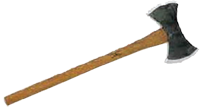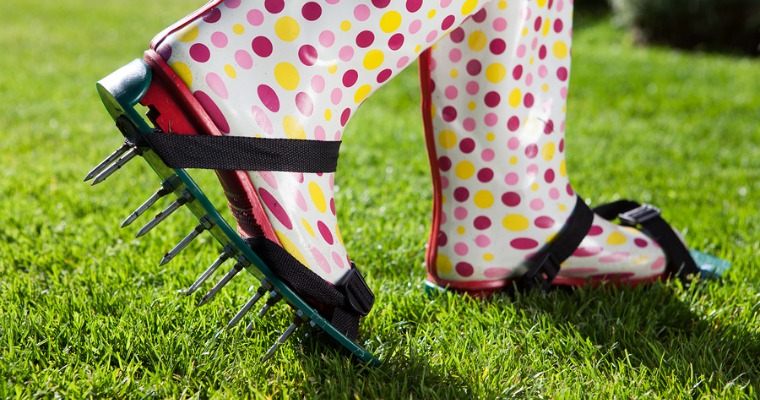Many homeowners overlook the importance of aerating their lawn. While you may be able to achieve a lush-green lawn simply by mowing and watering it on a regular basis, aeration still has some notable benefits. To learn more about aeration and the benefits it offers, keep reading.
Overview of Aeration
Aeration refers to the process of “scoring” the soil with small holes. Also known as “plugs,” these holes vary in size depending on the aeration device used. Normally, however, aeration plugs are approximately 2 to 3 inches deep and 0.5 to 1 inch in diameter.
To aerate your lawn, you’ll need to use a special aeration device. The two most common devices are a rolling push-spike aerator and aerator shoes. The former works by pushing holes through the soil as you roll it, whereas the latter are attachments that you wear on your shoes while walking over your lawn.
For small lawns, aerator shoes may suffice. If you have a moderate- or large-sized lawn, however, you should stick with a rolling push-spike aerator.
Benefits of Aerating Your Lawn
Aerating your lawn offers several key benefits, one of which is improved oxygen intake for the soil. With holes being punched into the lawn, more air can enter the soil; thus, discouraging the formation of disease-causing mold and mildew.
In addition to improved oxygen intake, aerating also allows for better moisture absorption. Regardless of which variety of grass grows on your lawn, it needs water to thrive. But you can’t always rely on mother nature to hydrate your grass.
When it rains, a substantial amount of water may remain stuck on the surface. This is particularly true if the soil is compacted. Aeration helps to overcome this problem by encouraging moisture to flow deep into the soil where it’s easily absorbed.
Tips on Aerating Your Lawn
Most green thumbs and professional landscapers will agree that the best time of year to aerate your lawn is during the growing season. Aerating your lawn during the winter will result in the plugs being open for a prolonged length of time.
Furthermore, it may stress your grass, encouraging a longer state of dormancy. So, wait until the spring and summer to aerate your lawn, and consider performing one last year-end aeration in the fall (late September / early October here in Central Texas).
It’s also recommended that you aerate your lawn when the soil is moist, such as the day after it rains. Following these tips will help your lawn reap the benefits of aeration.
The Woodsman Company offers tree planting, tree pruning and shrub trimming, tree removal and stump grinding as well as a tree wellness program.
If we can help with any of your tree care needs give us a call at 512-846-2535 or 512-940-0799 or


I run a tree removal service in Georgia, but I don’t know much about lawn aeration. I get questions all the time from customers about it, and now that I’ve read your article, I’ll have a good base of knowledge to shoot from. Wanted to say thanks.